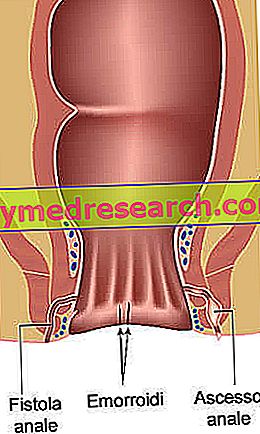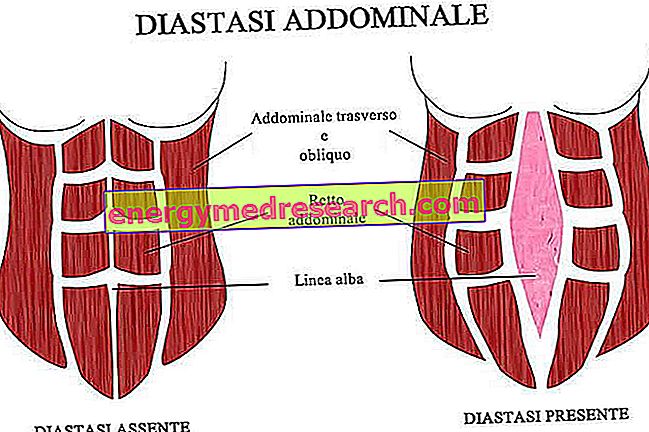Watch the video
X Watch the video on youtubeFlavonoids Antioxidants
Contained in chocolate antioxidant flavonoids
If it is true that the best foods are also the most dangerous ones for health, chocolate seems to be the classic exception that confirms the rule, at least in part.

On the other hand, those who want to fully benefit from the precious load of chocolate antioxidants must get used to the bitter overtones of the fondant, giving up the creamy taste of white chocolate and the velvety taste of milk bars; these two variants, due to the use of other ingredients, contain a significantly lower percentage of flavonoids.
In general, the greater the percentage of cocoa in the beloved tablet and the greater the presence of flavonoids. On average, 100 grams of dark chocolate contain 50-60 mg, while in a similar quantity of milk chocolate we find only 10 mg; the percentage of flavonoids in white chocolate is actually nothing.
The amount of flavonoids contained in dark chocolate is similar to that of berries (antioxidant foods par excellence), while in terms of quality it reflects, with its catechins, the antioxidant power of green tea.
Effects of flavonoids
Why are chocolate flavonoids so important to our health?
These natural antioxidants limit the negative effects associated with:
- High plasma cholesterol levels, especially, of its "bad" fraction attributable to LDL lipoproteins
- Hypertension
- Systemic inflammation
- "Stiffening" of the vascular walls.
In doing so, flavonoids protect arteries from atherosclerosis damage and prevent cardiovascular diseases such as heart attack and stroke.
Furthermore, it is assumed that these antioxidants can play a decisive role in preventing age-related cognitive decline.
Note : keep in mind that chocolate, in addition to flavonoids that reduce blood pressure, also contains stimulants such as caffeine, which tend to increase it especially in those who are predisposed.
Fats and Calories
Although this food is rich in substances that are important for our health, it is still a good rule not to get too excited about it.
The flavonoids, in fact, do not "erase" the calories of fat, which in chocolate are the masters.
Chocolate fats
In spite of everything, the triglycerides contained in dark chocolate of GOOD quality are not so bad. In fact, they contain approximately:
- 33% of oleic acid: the same present in olive oil, with cholesterol-lowering properties
- 33% stearic acid: with neutral effect on plasma cholesterol levels
- 33% of palmitic: saturated fatty acid with hypercholesterolemic properties.
It could be said that the metabolic effects of oleic, palmitic and stearic acid tend to cancel each other out, having a theoretically neutral impact on cholesterolemia.
Chocolate calories
A 100g chocolate bar provides just under 500 kcal, covering in a single bite from 1/4 to 1/6 of the daily caloric requirement (depending on age, sex, physical size and degree of sport activity ).
Calories are therefore the real problem of chocolate; these, in fact, are directly correlated to the weight trend and, the more they are introduced, the less life expectancy is due to obesity and related metabolic pathologies.
To clarify, a chronic excess of food energy is associated with the onset of more or less severe (BMI> 25), which in turn is implicated in the onset of:
- Hypercholesterolemia
- Hypertension
- Hyperglycemia and type 2 diabetes mellitus
- Hypertriglyceridemia
- In case of genetic predisposition, hyperuricemia and gout
- Systemic inflammation, with increased risk of atherosclerosis, coagulopathies, heart attack and stroke
- Autoimmune disorders such as psoriasis
- Gastro-intestinal disorders
- Fatty hepatic steatosis
- Biliary lithiasis
- Joint pathologies etc.
Milk chocolate and white chocolate, in addition to being poorer in flavonoids, also have a higher energy of 10-15% and contain small amounts (15-35 mg) of cholesterol, which is instead absent in the flux.
Ideal consumption
Which chocolate to choose?
It is a good rule to choose a chocolate with the highest possible cocoa content.
On the other hand, not everyone appreciates the bitter taste of fudge; for educational purposes, it is advisable to start with foods containing cocoa percentages equal to or greater than 65%, then gradually increasing this value to give the palate time to get used to. "Instructing him" in this sense, which is absolutely feasible with a little patience, will also diminish the attraction towards sweets and particularly sweet foods, with further beneficial effects on health.
Avoid products containing caramel or other special fillings, because they are sweeter, more caloric and poorer in flavonoids. The same applies to chocolate spreads.
How much chocolate to eat?
So, chocolate yes, but in moderation. More freedom, as always, for sportsmen and those who lead an active life, but even in this case the excesses are not justified.
I LARN - Levels of Reference Nutrient Intake and energy for the Italian population (IV revision) - recommend an average portion of 30 g; be careful though! This is a quantity established in respect of sporadic or "once-off" consumption. If you want to eat dark chocolate every day you could be satisfied with a quantity between 5 and 15 g.
Nervous effects
Chocolate and neurotransmitters
Chocolate is often excluded from diets aimed at treating headaches as it contains tyramine, phenylethylamine and promotes the production of serotonin.
Chocolate for depressive symptoms
Serotonin is an excitatory neurotransmitter that, if present in defect, causes a pathological reduction in mood. Since the intake of chocolate, especially dark chocolate, increases the production of serotonin, it could be called a "natural antidepressant".
Chocolate and headache
If present in excess, serotonin promotes the appearance of migraine; that's why in the case of headaches it is inadvisable to eat chocolate, especially dark chocolate and in large quantities.
Chocolate addiction
The presence of tyramine, phenylethylamine and serotonin could also be involved in the so-called chocolate "addiction" which, if unequivocally confirmed, would explain the irresistible fascination it has for many people.
Stimulating effect of chocolate
Chocolate also contains stimulating active ingredients. We are talking about the relatively modest concentration in caffeine and theobromine, a caffeine-like substance, which can cause problems only to people who are hypersensitive to their pharmacological action.
For stimulant content, chocolate intake should be kept under control in the event of:
- Anxious symptoms
- Pregnancy and breastfeeding
- Irritable bowel syndrome and diarrhea in general (the intestine has the same receptors as nerve tissue and suffers the same effects given by neurotransmitters)
Keep in mind that extra dark chocolate can contain up to 35 mg of stimulants per 100 g of edible portion; these must necessarily be added to the daily balance of coffee, energy drinks and cola-type drinks to avoid excess.
Other Effects
Chocolate and heart problems
The excess of chocolate in the diet, due to the stimulating effect, is contraindicated in case of cardiac complications related to the rhythm and frequency of the beats (tachycardia, arrhythmia, etc.).
Chocolate and pseudo-allergic reactions
The same amines are responsible for pseudo-allergic reactions (red dots on the skin accompanied by itching), which can afflict individuals predisposed after a feast of chocolate.
Chocolate oxalates and calcium absorption
Being rich in oxalate, an antinutrient that complexes calcium in the intestine preventing its absorption, chocolate should be consumed in moderation by those suffering from osteoporosis and bone demineralization. Furthermore, it is advisable to swallow it away from meals characterized by the food sources of the mineral in question (milk, cheese, etc.).
Chocolate and GERD
Chocolate is not recommended in the diet therapy of many diseases affecting the digestive system such as: gastritis and hiatal hernia associated with gastroesophageal reflux disease (GERD). In fact, this food appears to be responsible for a reduction in the ability to contain the lower esophageal sphincter. If already hypotonic (even worse when associated with gastritis and hiatal hernia), the intake of chocolate facilitates the number, time and quantity of gastric reflux, irritating the esophageal mucosa and giving rise to the so-called gastroesophageal reflux disease.
Pharmacological Interactions
Can chocolate interact with drugs?
There is a series of drugs with moderate interaction with the active ingredients of chocolate. It is the case of: Adenosine, Clozapine, Dipyridamol, Ergotamine, estrogen, lithium, asthma drugs (beta-adrenergic agonists), some depression medications (IMAO), diabetes medicines (antidiabetic drugs), Phenylpropanolamine, Theophylline.
Mineral Content
Chocolate iron
Despite being slightly bioavailable, chocolate is a good source of iron.
However, chocolate iron is not absorbed optimally, participating, together with flavonoids, in determining the typically dark color of feces.
Other chocolate minerals
The concentrations of phosphorus, potassium and especially magnesium are also considered good, which, in quantities of about 300 mg per 100 grams, helps to satisfy the daily nutritional demand.
Insights
Chocolate diet Chocolate and dogs Teobromine Calories dark chocolate Calories milk chocolate Cocoa Calories milk chocolate and hazelnuts Cocoa - pharmacognosy Cocoa and depression Cocoa, chocolate, antioxidants and healthVideo Recipes
Don't miss the selection of the best dark chocolate recipes and videos on homemade spreadable chocolate preparation. Below is the video recipe for the Sacher Cake.
Sacher cake - Sachertorte
X Problems with video playback? Reload from YouTube Go to Video Page Go to Video Recipes Section Watch the video on youtube



